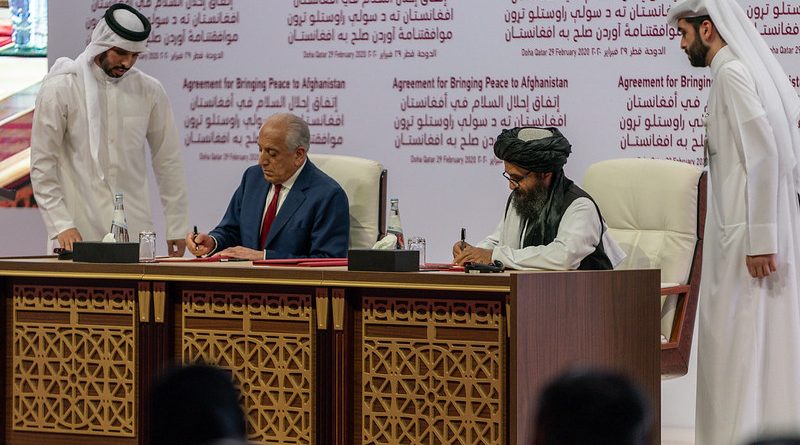U.S. Taliban Peace Deal Faces Obstacles a Week After its Signing
Casey Hatchimonji
Web Editor
On March 4, the U.S. conducted airstrikes against Taliban forces in Afghanistan. The attack comes days after U.S. and Taliban officials signed a peace agreement, aimed at ending the nearly two-decade long war in Afghanistan.
The news was first announced by U.S. military spokesman, Colonel Sonny Leggett, in a series of tweets, reports Foreign Policy. According to Leggett, the Taliban had conducted 43 attacks on Afghan checkpoints, the day prior to the airstrike, which he referred to as a “defensive strike.”
In the same series of tweets, Leggett affirmed the U.S.’s commitment to the peace agreement and said that while the U.S. and the Afghans have honored the agreement, the Taliban “appears intent on squandering this opportunity and ignoring the will of the people for peace.”
Hours before the attack, President Trump spoke on the phone with the Taliban’s chief negotiator Mullah Baradar Akhund. A spokesman for the Taliban said in a statement that, during the call, Baradar told Trump that, “It is the inherent right of the Afghans that all the points of this agreement are implemented as soon as possible,” reports Reuters.
The agreement was signed in Doha on February 29, after nearly a year of negotiations. The agreement, which was negotiated between U.S. and Taliban officials, is aimed at ending the war and bringing peace to Afghanistan. According to AP News,U.S. Secretary of State Mike Pompeo, who served as a witness to the signing, expressed that the deal is aimed at helping “Afghans forge peace.” However, intra-Afghan negotiations, intended to bring peace, rely on cooperation between the Taliban and Afghan officials—who were not included in the negotiation of the agreement.
The agreement included four conditions: a reduction in violence, the withdrawal of U.S. and NATO forces, Intra-Afghan negotiations, and an assurance that the Taliban would not use Afghanistan as a means to threaten U.S. security. The agreement could see U.S. forces withdrawing from Afghanistan within 14 months.
A prerequisite to the signing of the agreement was a seven-day “reduction of violence” period. According to The New York Times,violence was at the lowest it had been in years, which gave U.S. officials the impression that it would continue. However, since the signing of the agreement and the U.S. airstrike, there were 76 attacks across Afghanistan, reports The Times.
Intra-Afghan peace negotiations are set to begin March 10. However, the increase in violence and issues with an agreed-upon exchange of prisoners have many concerned that the talks will be delayed. Within the agreement is a provision entailing the release of 5,000 Taliban prisoners, with a release date set for the same day as the first round of the Intra-Afghan talks. Foreign Policy reports that Afghan President Ashraf Ghani has not committed to freeing the prisoners. According to Reuters,
Ghani has stated that the U.S. lacks the authority to make a decision regarding the prisoners. The Taliban has said that they will not participate in the Intra-Afghan talks until the prisoners are released. With peace talks looming closer, neither side has made any concession regarding the fate of the prisoners and violence between the negotiating parties seems to be on an influx.
There are also concerns over the Taliban’s motives. In an exclusive article released on the same day, three U.S. officials told NBC News that the U.S. government has intelligence revealing that the Taliban has no intention of honoring the agreement. In response, Taliban spokesman Suhail Shaheen rejected the allegations in a tweet posted shortly after the article was published.
This has led to increased skepticism and concern among Afghan officials and the U.S. intelligence community. The already fragile peace deal has faced major obstacles within the first week of its signing. However, many are still hopeful that the agreement can facilitate the conversation of long-lasting peace in Afghanistan.




